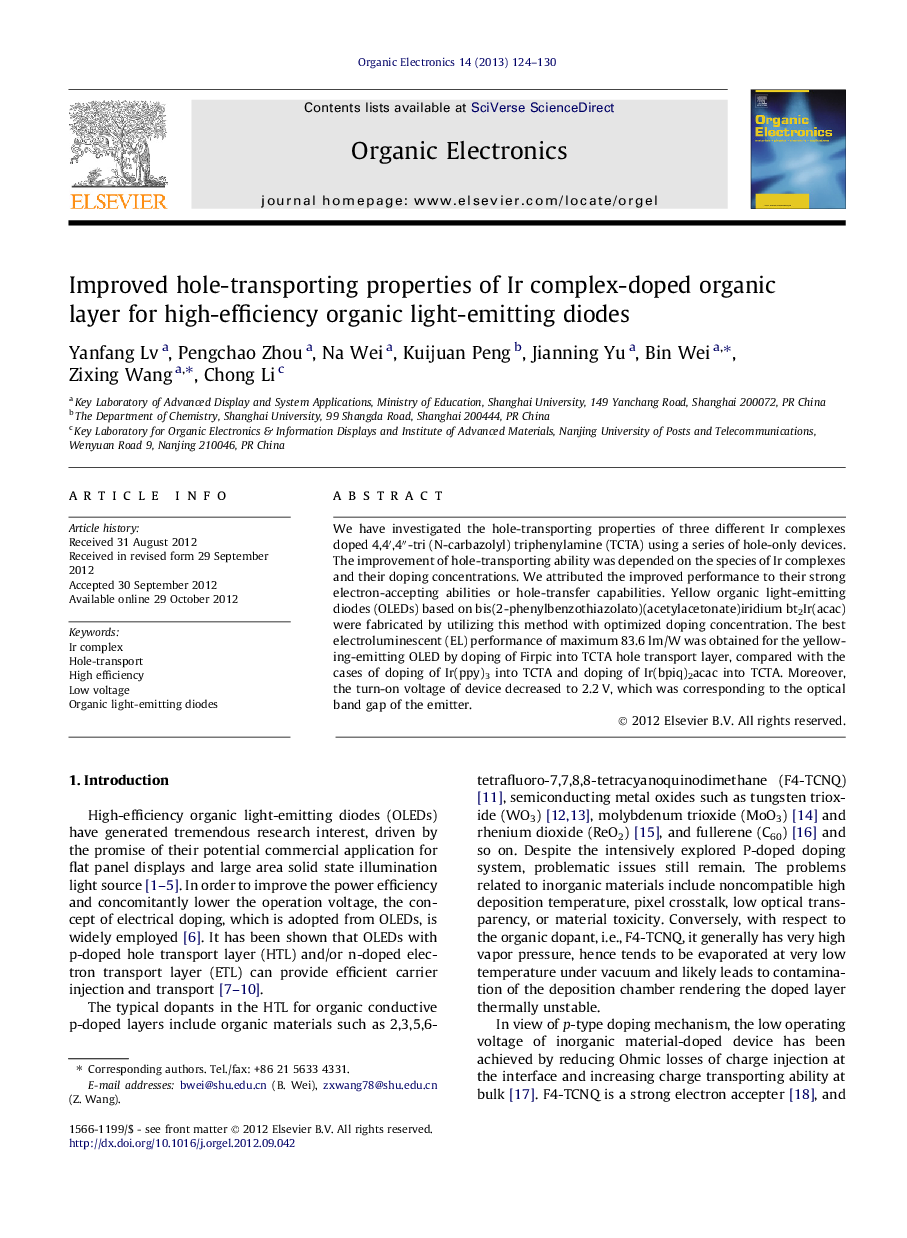| Article ID | Journal | Published Year | Pages | File Type |
|---|---|---|---|---|
| 1263945 | Organic Electronics | 2013 | 7 Pages |
We have investigated the hole-transporting properties of three different Ir complexes doped 4,4′,4″-tri (N-carbazolyl) triphenylamine (TCTA) using a series of hole-only devices. The improvement of hole-transporting ability was depended on the species of Ir complexes and their doping concentrations. We attributed the improved performance to their strong electron-accepting abilities or hole-transfer capabilities. Yellow organic light-emitting diodes (OLEDs) based on bis(2-phenylbenzothiazolato)(acetylacetonate)iridium bt2Ir(acac) were fabricated by utilizing this method with optimized doping concentration. The best electroluminescent (EL) performance of maximum 83.6 lm/W was obtained for the yellowing-emitting OLED by doping of Firpic into TCTA hole transport layer, compared with the cases of doping of Ir(ppy)3 into TCTA and doping of Ir(bpiq)2acac into TCTA. Moreover, the turn-on voltage of device decreased to 2.2 V, which was corresponding to the optical band gap of the emitter.
Graphical abstractThe hole-transporting properties of three different Ir complexes doped 4,4′,4″-tri (N-carbazolyl) triphenylamine (TCTA) using a series of hole-only devices have been investigated. The improvement of hole-transporting ability was attributed the improved performance to their strong electron-accepting abilities or hole-transfer capabilities.Figure optionsDownload full-size imageDownload as PowerPoint slideHighlights► Ir complex-doped hole transport layer can greatly improve the performance of OLEDs. ► The improved hole-transporting ability depended on the doping concentrate and species of Ir complex. ► The strong electron-accepting or hole-transfer capability contributes to the improvement of hole-transporting. ► A maximum 83.6 lm/W has been obtained for the yellow-emitting OLED by doping of Firpic into TCTA.
